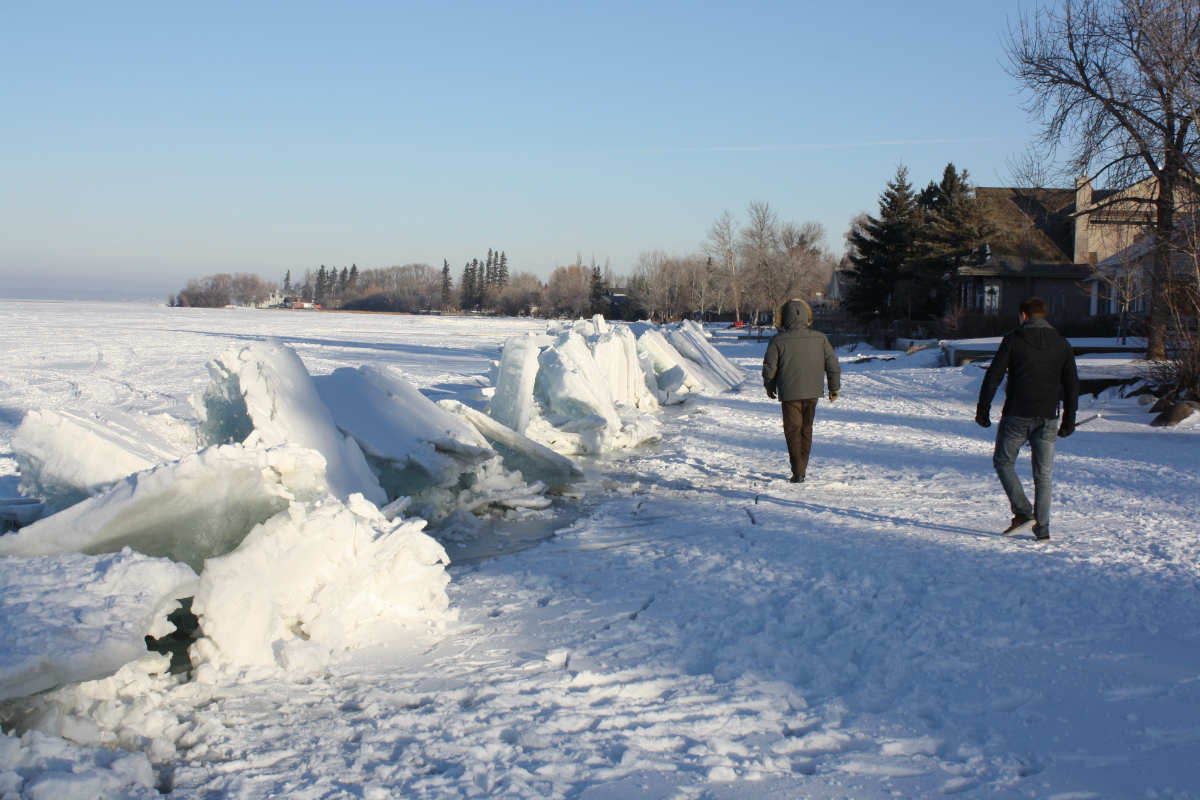
Ice-ridges on Lac Ste. Anne, taken on January 5th, that formed after the seismic event shook the lake. Now, University of Alberta researchers have solved the mystery of the cause: an icequake. Photo credit: Ryan Schultz/Alberta Energy Regulator
On January 1st, 2018, residents of several central Alberta communities were rattled by quakes that damaged homes and properties. But these were no earthquakes, according to new findings by researchers at the University of Alberta: they were icequakes, caused by a unique combination of weather and buckling lake ice.
Uncovering the cause of the mystery quakes took expertise in several fields, bringing together Jeffrey Kavanaugh, associate professor in the Department of Earth and Atmospheric Sciences, Mirko van der Baan, professor in the Department of Physics, Ryan Schultz, a geophysical research scientist and seismologist at the Alberta Geological Survey, and other geoscientists.
"Central Alberta is a pretty seismically quiet place, and so the fact that these tremors were felt in several communities across the region, and with this much power, is quite noteworthy," said Kavanaugh. "Unlike most seismic activity, which is caused by tectonic stresses, these were caused by thermal stresses related to Alberta's cold climate." The quakes occurred on Lac Ste. Anne, Pigeon Lake, and Gull Lake, and had a magnitude of 2.0 on the Richter scale, recorded on the Albertan regional seismic network.
All shook up
So what is an icequake, exactly? Anyone that has ice fished on a lake has likely felt the pops and groans a lake makes as it adjusts itself during the course of the day.
"These are tiny little icequakes," said Schultz. "Usually this process happens slowly and as a series of smaller events, since snow cover can insulate some of the temperature changes."
But as New Year's Day dawned this year, a series of unlikely weather conditions came together to cause a much larger icequake, Schultz explained. A lack of insulating snow cover and a dramatic rise in temperature over 24 hours-from -35 C to -5 C-caused the lake ice temperature to rapidly rise.
"This caused a rapid thermal expansion of the ice, up to four metres towards the shoreline," said Schultz. "With nowhere for the expanding icefront to go, it eventually buckled and broke suddenly-resulting in the icequake shaking and the spectacular ice-ridges forming near lakefront."
Icequakes are an uncommon phenomenon to begin with-but one of this power is especially rare. "Lake ice ruptured nearly instantaneously over hundreds of meters, which is very unusual," said van der Baan. "The last time this happened on the Albertan lakes was probably several decades ago."
Solving a seismic mystery like this doesn't just stem from quenching curiosity, either: the research increases our understanding of what causes events like this to occur, improving our ability to predict them.
"It's possible that all of these conditions only come together at the same time and the same place on a scale of decades," said Schultz. "But along these lines, better understanding the physical process that caused these icequakes is helpful for understanding them and maybe even anticipating them in the future."
The paper, "A New Year's Day Icebreaker: Icequakes on Lakes in Alberta, Canada," was published in the Canadian Journal of Earth Sciences (doi: 10.1139/CJES-2018-0196).
Wondering if you can help with the study of icequakes? Icequakes and other seismic events often go unreported-and citizen-reported data is very helpful to scientists studying these events. The researchers suggest contacting the Alberta Geological Survey to report unusual geological activity.